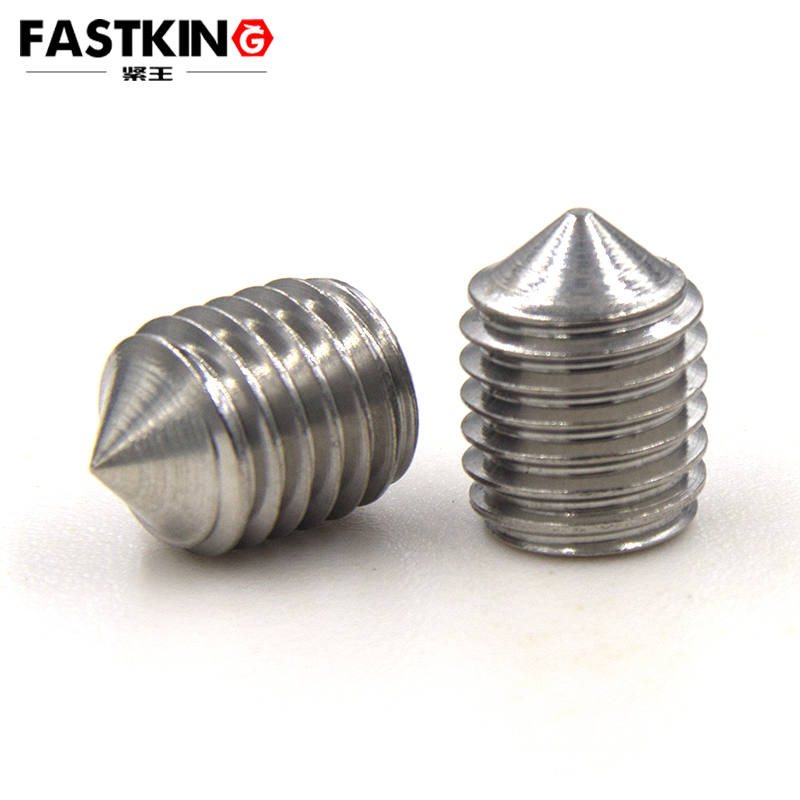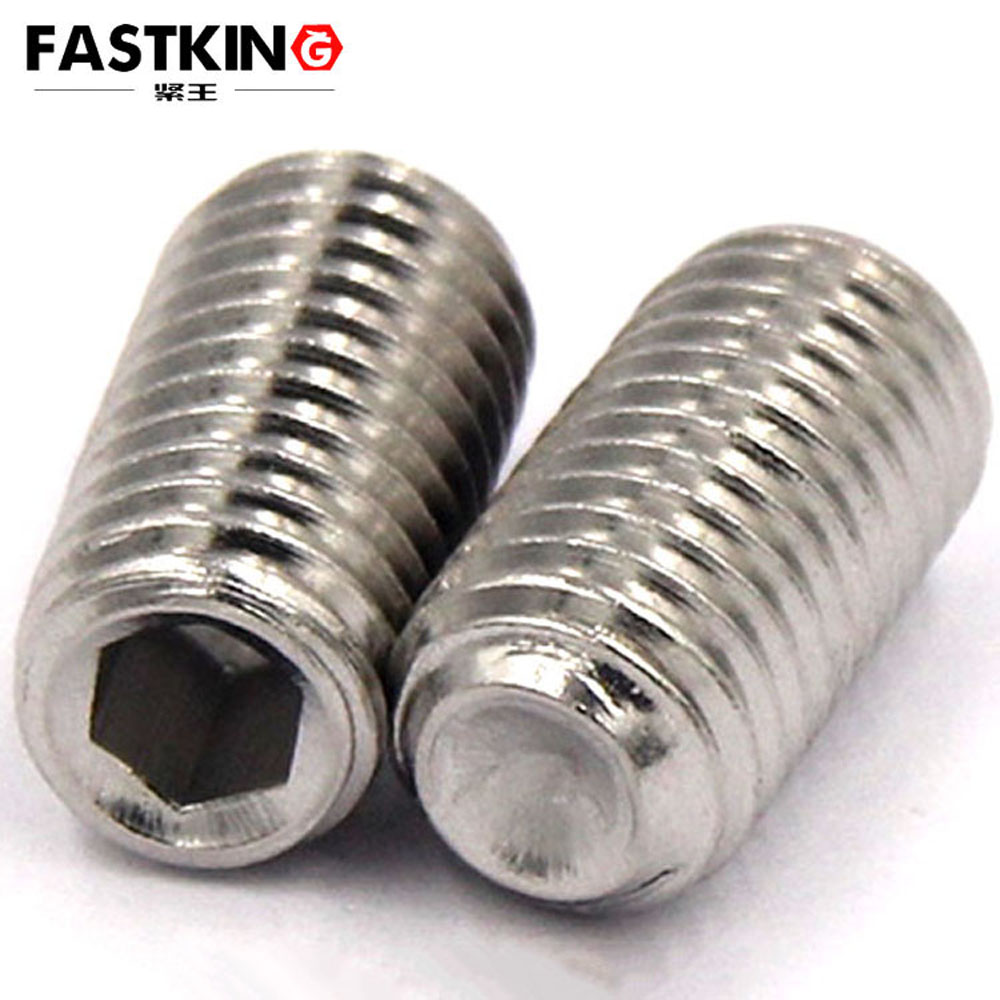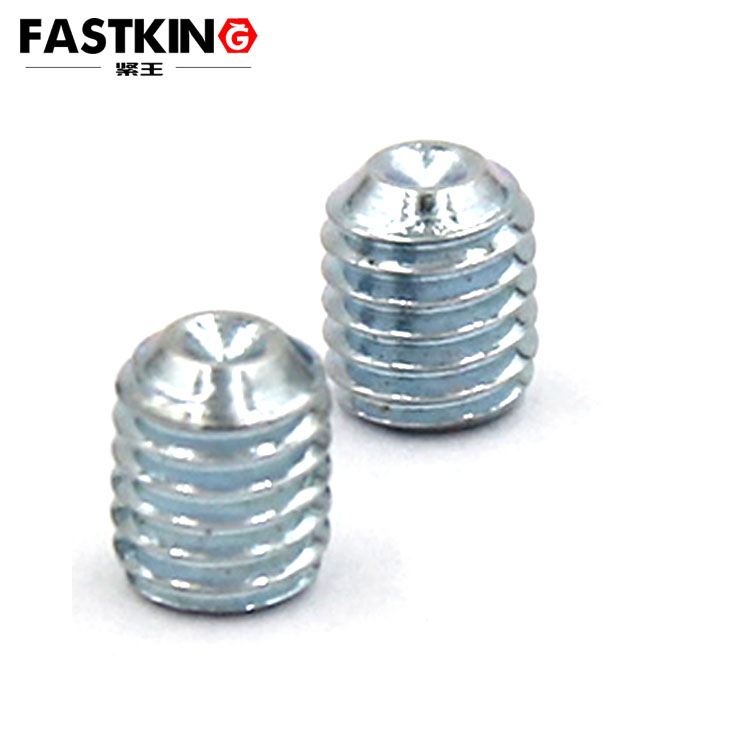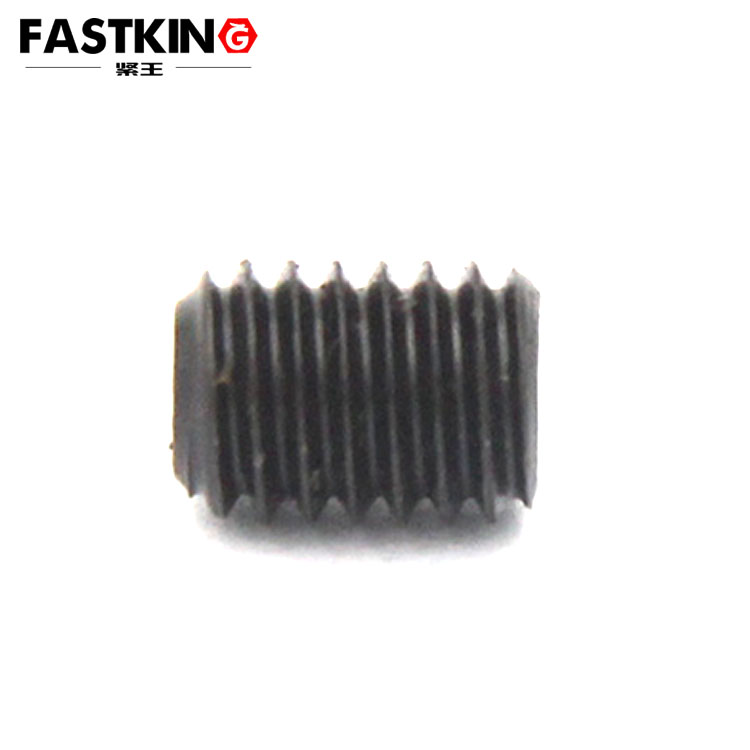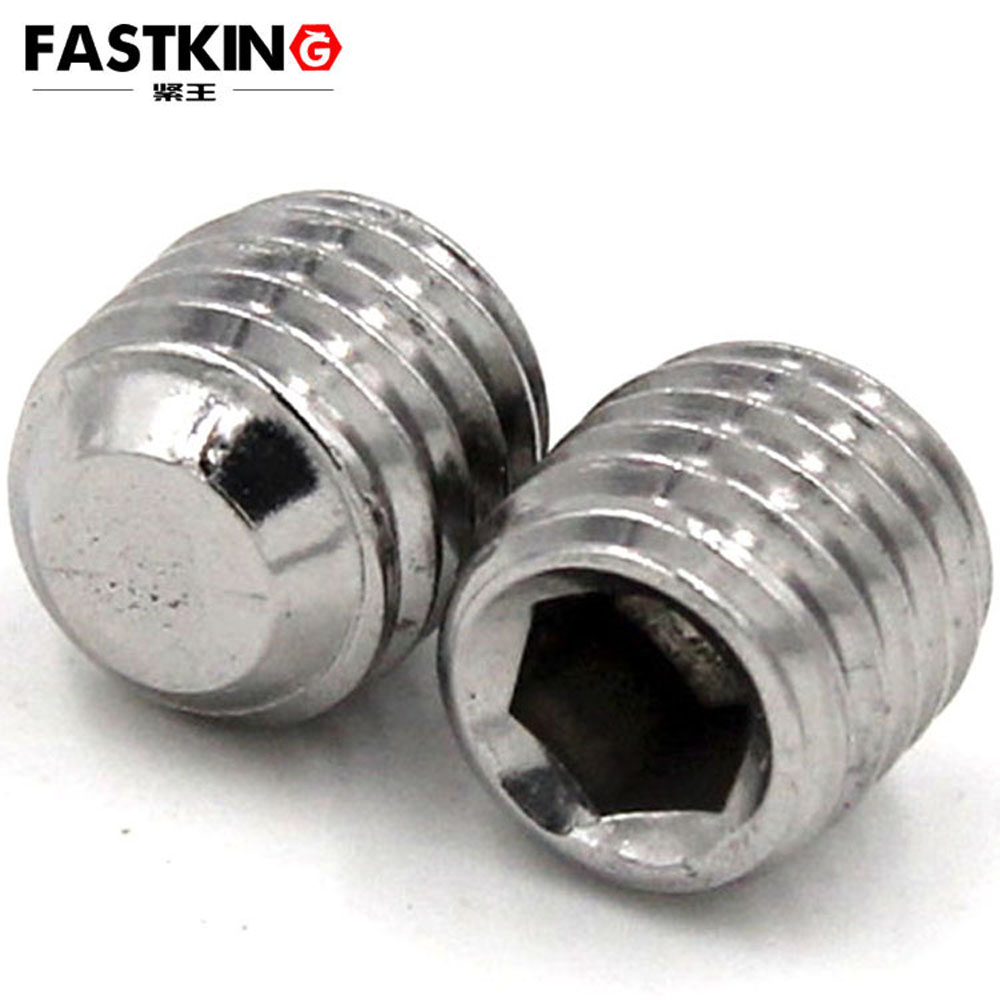- ZHUHAI JIALI HARDWARE CO.,LTD.
- +86-756-8586520
Hexagon socket head set screw ASME b18.3
- Product description:The inner hexagon point set screw, also known as the inner hexagon cone end machine meter or top screw, belongs to the connector product. Headless, hexagonal groove, with the size of the hexagon wrenc
It combines the cost-effectiveness of 201 stainless steel with the precise positioning advantage of the hexagon socket pointed structure. It not only solves the problem of easy rusting of ordinary carbon steel but also avoids the cost pressure of 304 stainless steel, making it widely used in fields such as light industry machinery, household hardware, and low-end electronic equipment. In-depth analysis of its material characteristics, structural value, and application strategies is the key to achieving "maximum cost-performance".
I. Core Value of 201 Stainless Steel Hexagon Socket Pointed Set Screws: Synergy Between Material and Structure
1. Characteristic Positioning of 201 Material: Balancing Cost and Basic Corrosion Resistance
As an economical stainless steel, 201 stainless steel differs from 304 stainless steel mainly in composition and performance:
- Composition Difference: 201 stainless steel contains 16%-18% chromium and 3.5%-5.5% nickel (much lower than 304 stainless steel’s 8% nickel content). It adds 5.5%-7.5% manganese to replace part of the nickel, reducing costs by 30%-40% compared to 304 stainless steel and significantly lowering procurement budgets.
-
Performance Characteristics: It has a tensile strength ≥ 520MPa and a yield strength ≥ 275MPa, slightly higher than 304 stainless steel, providing a certain level of mechanical strength. In terms of corrosion resistance, it can withstand dry environments and slightly humid environments (such as the interior of indoor household appliances), but is prone to rust in salt-spray or weak acid environments (its neutral salt-spray test life is approximately 24-48 hours, only 1/5-1/10 that of 304 stainless steel). Its applicable scope must be clearly defined.
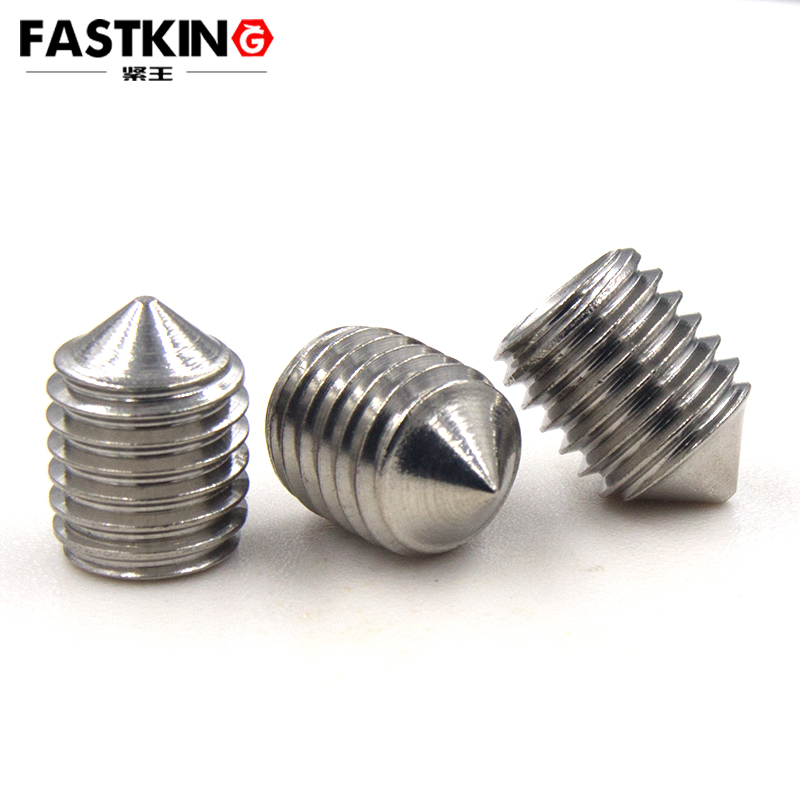
2. Adaptability Advantages of the Hexagon Socket Pointed Structure
The combination of the hexagon socket head and pointed tip design endows the screw with dual capabilities of "efficient assembly + precise positioning":
- Hexagon Socket Head: It has a high fit with wrenches and can transmit greater tightening torque than slotted or cross-recessed heads (e.g., an M8-sized hexagon socket screw can withstand a torque of 25-30N·m, avoiding slippage during manual assembly). Additionally, its low head height (only 2.5mm for M5-sized screws) makes it suitable for space-constrained scenarios such as household hardware and small motors.
- Pointed Tip Design: The 60° or 90° cone-shaped pointed tip undergoes quenching treatment (hardness ≥ HRC45), allowing it to embed into soft substrates like aluminum alloys and zinc alloys. This enables anti-rotation positioning of shaft components (e.g., fixing the shaft of furniture drawer slides) without the need for additional washers, simplifying the assembly process.
II. Application Strategies for 201 Stainless Steel Hexagon Socket Pointed Set Screws: Scenario Adaptation and Risk Avoidance
1. Core Applicable Scenarios: Focusing on Mid-to-Low-End, Non-Harsh Environments
Based on the performance limitations and structural advantages of 201 stainless steel, its core applicable scenarios must meet three conditions: "non-strong corrosion + medium-low load + cost sensitivity":
- Household Hardware Field: Such as positioning the shaft of wardrobe drawer slides and fixing the shaft of cabinet door hinges. The dry indoor environment (relative humidity < 60%) prevents 201 stainless steel from rusting; the hexagon socket head facilitates precise tightening during furniture assembly; and the pointed tip positioning prevents slippage of slides and hinges during use. Its cost is only 60%-70% that of 304 stainless steel, making it suitable for mass-produced furniture.
- Light Industry Machinery Field: Such as fixing the shaft of small fan motors and positioning components of household sewing machines. The equipment operates in an indoor normal-temperature environment (0-40℃) without acid-base or salt-spray erosion. The mechanical strength of 201 stainless steel can meet the medium-low load requirements (axial force < 500N) during motor operation, and the hexagon socket pointed structure ensures no loosening of the motor shaft, reducing equipment manufacturing costs.
- Low-End Electronic Equipment Field: Such as fixing the internal shaft of small power adapters and positioning components of toy motors. The interior of electronic equipment is dry and corrosion-free, and the requirement for fastener strength is low (torque < 10N·m). 201 stainless steel can replace galvanized carbon steel screws (avoiding circuit board contamination caused by galvanized layer peeling) while controlling procurement costs.
2. Scenario Avoidance Strategies: Clarifying Performance Boundaries
The corrosion resistance limitation of 201 stainless steel means it must avoid three types of scenarios to prevent functional failure:
- Strong Corrosion Scenarios: Such as under kitchen sinks (frequent contact with water and detergents) and outdoor lamps (exposed to rain). These environments accelerate the rusting of 201 stainless steel, leading to red rust within 3-6 months and subsequent screw loosening. In such cases, 304 or 316 stainless steel should be used instead.
- High-Load Scenarios: Such as positioning machine tool spindles and fixing transmission components of heavy machinery. 201 stainless steel has low fatigue strength (fatigue strength of approximately 180MPa after 10^6 cycles, lower than 304 stainless steel’s 220MPa). Long-term high loads easily cause tip wear and thread deformation, so Grade 8.8 alloy steel should be selected instead.
- High-Temperature Scenarios: Such as fixing internal components of ovens and parts around automobile engines. When 201 stainless steel is exposed to temperatures above 150℃, the risk of intergranular corrosion increases, and its mechanical strength decreases by more than 30% at high temperatures. High-temperature-resistant stainless steel or alloy tool steel should be used instead.
III. Selection and Usage Strategies for 201 Stainless Steel Hexagon Socket Pointed Set Screws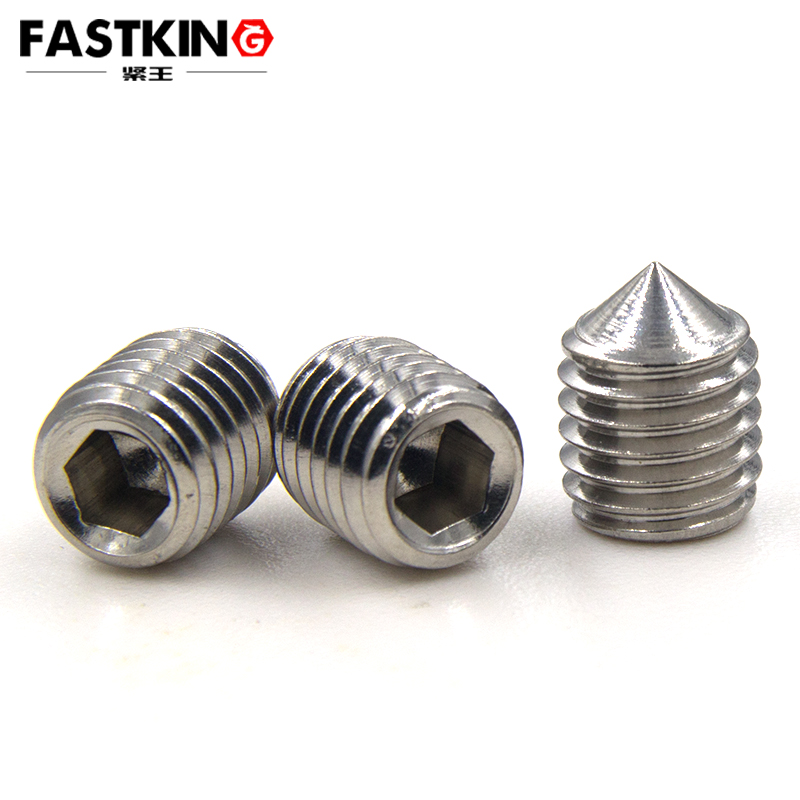

1. Parameter Matching for Selection: Precise Adaptation to Requirements
- Specification Selection: Determine the thread specification based on the material of the fixed component and the load. For household hardware (e.g., drawer slides), select M4×6 or M5×8 specifications (the pointed tip embeds 0.2-0.3mm deep into the soft substrate to avoid substrate cracking). For light industry machinery (e.g., small motors), select M6×10 or M8×12 specifications (to meet medium-low load positioning needs).
- Surface Treatment Optimization: To improve corrosion resistance, 201 stainless steel can be coated with a passivation film (extending salt-spray life to 72 hours) or undergo electrophoresis (forming an insulating coating on the surface, suitable for electronic equipment). Although this increases costs by 5%-10%, it significantly reduces the risk of rust in humid indoor environments.
2. Usage Precautions: Extending Service Life
- Tightening Torque Control: Use a torque wrench to control the tightening torque (8-10N·m for M5 specifications and 20-25N·m for M8 specifications) to avoid tip cracking or thread slipping caused by excessive torque.
- Regular Maintenance: When used in humid indoor scenarios (e.g., bathroom cabinet hinges), apply anti-rust oil every 6 months to supplement lubrication and isolate moisture, delaying the rusting of 201 stainless steel.
- Failure Judgment: If red rust appears on the screw surface or the screw spins idly during tightening, replace it immediately to avoid safety hazards caused by component loosening (e.g., furniture drawer falling off, motor shaft deviation).
The core of the application strategy for 201 stainless steel hexagon socket pointed set screws lies in "precisely matching scenario requirements without blindly pursuing high performance". In mid-to-low-end scenarios that are cost-sensitive and have mild environments, it can leverage the synergistic advantages of its material and structure to balance "low cost + basic positioning function". In harsh environments, however, higher-performance materials must be decisively selected to prevent equipment failures caused by fastener failure. Only by clearly defining its applicable boundaries can its application value be maximized.

